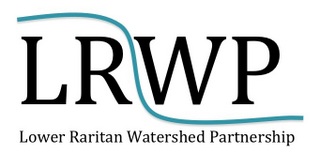Little Fish, Big Deal
Article by LRWP intern Allie Oross
During the May 21 LRWP meeting, attendees were treated by an insightful and comprehensive presentation on the importance of forage fish and their essential role in a functioning ecosystem. Presenting this information was Zack Greenberg, a Senior Associate of The PEW Charitable Trusts. Zack explained the benefits of using a big picture approach to fishery management and elucidated the different regulatory acts that control the amount of fish being taken out of the water and endeavor to limit the complications of over-fishing.
Zack first provided an overview of The Magnuson-Stevens Act (MSA), the primary law that governs the management of marine fisheries and is responsible for the rebuilding of 43 previously over-fished populations since 2000. Though this law continues to be a significant step towards sustainable management practices, it is constantly targeted by politicians attempting to weaken the guidelines that limit over-fishing and the punitive measures taken when someone violates these guidelines. While the goal of the MSA is to prevent over-fishing while achieving optimum yield, it focuses on individual species and treats their population numbers as mutually exclusive from each other. On the other hand, Ecosystem-based Fisheries Management (EBFM) seeks to remediate this oversight by looking at the different marine species as interlocked pieces in the puzzle that is marine conservation. EBFM seeks to protect the deceptively insignificant forage fish that are actually the foundations for a thriving aquatic habitat. Forage fish include species like salmon, trout, herring, shad, alewives, menhaden, and so on.
By monitoring the fluctuations in population size for different marine species and establishing balance between the different trophic levels in the ocean, a big picture approach emphasizes the interspecies connections that make up an ecosystem. Though these forage fish are small and have little direct market value on their own, they provide an invaluable food source for many of the larger marine species. Removing this resource could have negative implications, not only on the environment, but also on the economy. Taking away the fish that provide nourishment for larger sea life (like marine mammals, sportfish, sharks, seabirds, etc.) can influence recreational activities and the businesses that rely on them. Innumerable coastal and riverine communities (including communities on the Raritan River and Raritan Bay) would lose tourism if they couldn’t provide visitors with opportunities such as fishing, boating, whale watching, and/or diving. The protection of these forage fish is not currently covered under the MSA, which leaves them very vulnerable.
Marine and freshwater ecosystems are connected by much more than just the water that flows between them. Multiple forage fish species, including alewives and herring, are anadromous, meaning they migrate from the sea to freshwater rivers in order to spawn. These same species are also suffering from radically low populations due to marine bycatch, which prevents adults from ever reaching their spawning destinations and successfully propagating the species (Hasselman et al, 2016). Along with the obstacle of bycatch, river damming also frequently impedes many fish from migrating upriver to spawn. Many river-focused attempts at repopulating forage fish species have been relatively unsuccessful due to the marine based causes of population decline (bycatch, over-fishing, habitat degradation, etc.) (West, 2017). With improved federal fishery management and strengthened marine conservation policies we can negate the damage we have inflicted not only on individual species but on the environment as a whole.
The Pew Charitable Trusts, the LRWP and other environmental groups that understand the tremendous value of the “small fish” encourage the public to stand up on the issue of declining forage fish populations. The public has until June 25 at 5 PM to provide comment to the New England Fishery Management Council on a “control rule” for Atlantic Herring fishing in New England. Pew is rallying signatures/letters in support of the Council creating a 50-mile coastal buffer from herring trawling and implementing a science-based control rule. Please consider signing Pew’s Action Alert, or send an email to the New England Fisheries Management Council to let them know that you care about New England’s coastal ecosystem and economy, and that you want them to extend a buffer zone to 50 miles offshore year-round in which midwater trawl fishing would not be allowed to operate.
Referenced Articles
- Hasselman, D. J., Anderson, E. C., Argo, E. E., Bethoney, N. D., Gephard, S. R., Post, D. M., Palkovacs, E. P. (2016). Genetic stock composition of marine bycatch reveals disproportional impacts on depleted river herring genetic stocks. Canadian Journal of Fisheries and Aquatic Sciences, 73(6), 951-963. doi:10.1139/cjfas-2015-0402
- West, A. (2017-2018). Forcing Evolution’s Hand. Inquiry Magazine, 29-32. https://officeofresearch.ucsc.edu/ord/outreach/inquiry.html
